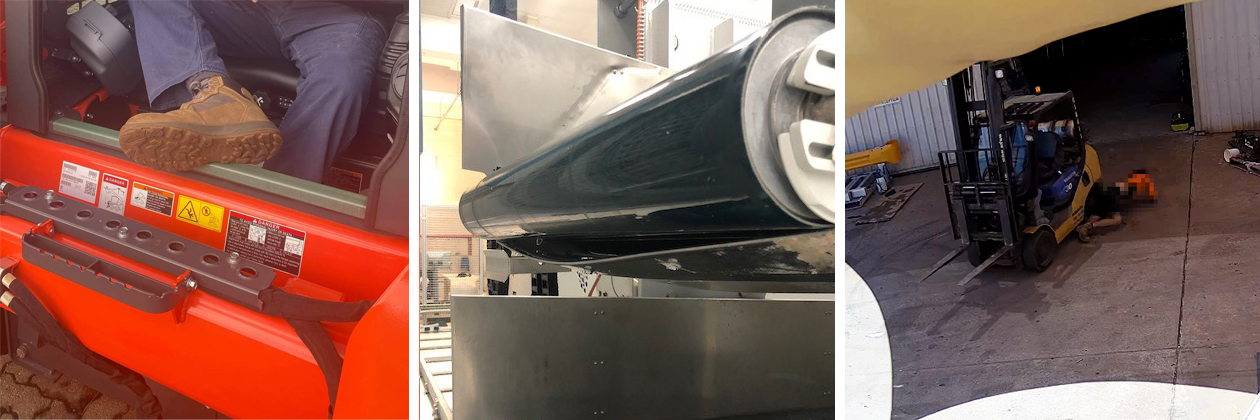Three workers seriously injured in separate plant (machinery) incidents
Background
Three Territory workers received serious crush injuries in separate incidents last month.
Incident one: a worker at a remote community worksite was injured operating a skid-steer loader. A portion of the worker’s foot was outside of the cabin and resting on a crush point area, when they lowered a bucket attachment onto their foot, crushing and fracturing it.
Incident two: a worker in the greater Darwin area received a serious crush injury, when, their arm was drawn into a conveyor belt. The worker was operating machinery when material became wedged under a conveyor belt roller. The incident occurred as the worker attempted to remove the material from the roller. The worker suffered fractures to their wrist and forearm.
Incident three: a worker was seriously injured after they were knocked over by a forklift. The worker (who was the forklift operator) had just exited, when the forklift moved forward knocking the worker to the ground. The worker’s leg became entangled in the forklift’s wheel well and they suffered multiple fractures to their foot.

Disclaimer
The above information is based on preliminary findings from NT WorkSafe’s initial enquiries. Enquiries are ongoing to determine the cause of the incident and the appropriate regulatory response.
Safety Information
Machinery, also known as plant, are a major cause of work-related death and serious injury nationally. There are significant risks associated with using plant including but not limited to:
- Entanglement, cutting, stabbing, puncturing, shearing, de-gloving or amputation by moving machine parts, and
- Crushing from uncontrolled or unexpected movement of mobile plant, being thrown off, tipping or rolling over, being trapped between mobile plant and fixed structures, or material falling from the mobile plant.
NT WorkSafe strongly urges all workplaces undertaking similar activities to ensure the following measures are in place, and that they are effective:
- Undertake Hazard Identification, Risk Assessment and Control (HIRAC) beginning by identifying hazards related to the use of plant in the workplace using the Hazard Checklist, which is Appendix C of the Managing the risks of plant in the workplace Code of Practice;
- Consider available control measures and implement the control measures that most effectively eliminate or minimise the risks so far as is reasonably practicable;
- Follow the Northern Territory’s Work health and safety consultation, cooperation and coordination Code of Practice, and consult your workers and their health and safety representatives when deciding how to manage the risks in the workplace, including when reviewing and making changes to existing processes;
- Discuss the hazards identified and the control measures you have implemented at your next toolbox talk or team meeting;
- Have systems which ensures all:
- Workers and duty holders have information about the plant which enables them to fulfil their responsibilities in managing the risks associated with the plant in the workplace;
- Persons in the workplace have appropriate training and instructions necessary to protect them from risks to their health and safety related to the use of plant in the workplace;
- Plant requiring registration, and all work requiring licencing is compliant;
- Persons in the workplace have appropriate PPE;
- Check your maintenance schedules and ensure that all plant and machinery is maintained and repaired according to the manufacturer’s specifications; and
- Ensure workers complete pre-start checks before plant and machinery are operated.
Mobile Plant
If the machinery being operated is mobile, such as a forklift or crane. Ensure the following measure is in place after you have undertaken a HIRAC.
- Complete the Traffic control measures checklist and Traffic hazards checklists.